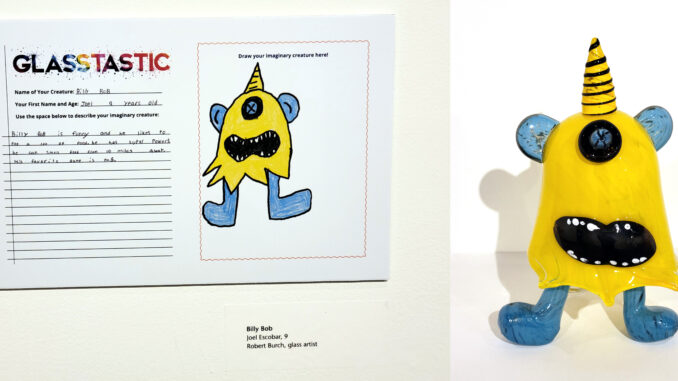
Photographers often chase inspiration across mountains, cities, and oceans, but I’ve found it hiding much closer to home — in a small-town art gallery, a handmade craft market, or even a quiet scroll through an artist’s online gallery. Sometimes the best inspiration comes from places that have nothing to do with photography at all.
I recently saw an exhibit called Glasstastic, where children’s drawings of imagined creatures were brought to life as three-dimensional glass sculptures. Seeing those playful sketches transformed into tangible works of art reminded me that inspiration often comes from the idea itself, not the medium.
Moments like that stay with me. Every time I wander through a craft fair, a local event, or a small gallery, I feel that same creative spark — a rush of new ideas and possibilities I hadn’t considered before. For travel photographers, these spaces aren’t just diversions; they’re reminders of how art, in all its forms, teaches us to see the world more deeply and tell more meaningful stories.
Seeing Art Through a Photographer’s Eyes
Inspiration doesn’t have to come from another photograph. A line drawing, a sculpture, or a piece of glasswork can ignite ideas for framing, color, or mood in ways you wouldn’t expect. Look closely at how a painter uses shadow, how a sculptor balances form, or how a textile artist repeats patterns. Each of these choices offers lessons in composition and rhythm that can transform the way you see through your lens.
Small regional galleries are especially valuable because they often features artists whose work reflects the identity and rhythm of a place — its landscapes, traditions, and people. A collection of coastal paintings might inspire your next seascape palette; a minimalist sculpture could influence how you compose urban scenes. Every art form has lessons to teach photography.
Local Craft Markets: The Pulse of Place
If galleries teach you to see, craft markets teach you to connect. These lively gatherings are full of color, culture, and human stories. Every booth tells a tale — through texture, material, and hands-on creativity.
Spend time talking to artisans. Learn how they select dyes, carve wood, or weave fibers. The process behind their work often reveals as much inspiration as the finished piece. Approach these markets with curiosity rather than your camera. Listen. Observe. When you do photograph, aim to capture the spirit of the place — not just the goods on the table, but the exchanges between maker and visitor. These moments reveal the heartbeat of a community.
Finding Inspiration Online Without Losing Authenticity
While nothing replaces real-world interaction, online spaces can also be powerful sources of creative renewal — if you use them intentionally. Platforms like Pinterest and Behance are filled with visual experiments that can refresh your creativity by exposing you to unfamiliar techniques and global perspectives.
Explore online museum archives, too. Many institutions now digitize their collections, allowing you to browse centuries of art from your own studio. Look beyond photography accounts — follow painters, illustrators, architects, and ceramicists. The more varied your influences, the more layered your photographic vision becomes.
Just remember, inspiration is not imitation. Use what you discover online to expand your perspective, not to replicate someone else’s style. Think of it as a conversation between mediums — your camera interpreting ideas originally expressed in clay, paint, or glass.
Turning Inspiration Into Action
Finding inspiration is only the first step. The real magic happens when you act on it. Before your next trip, create an “inspiration board” — a visual collection of colors, textures, or moods drawn from art, crafts, or online imagery. Use it as a compass for your photography, rather than a roadmap.
While on location, focus on one visual theme at a time — repetition, symmetry, natural patterns, or handmade textures. If you’re revisiting older work, try re-editing an image with your new influences in mind. How might that photograph change if you approached it like an impressionist painter or a textile artist?
Let the boundaries between art forms blur. The more you mix influences, the richer your creative language becomes.
Keep Your Creative Well Full
Inspiration is a renewable resource — but only if you keep refilling it. Every gallery visit, every conversation with a craftsperson, every thoughtful scroll through an artist’s work deepens your visual awareness.
So the next time you hit a creative lull, look beyond the lens. Step into an art space, wander a local market, or explore a digital collection. You might just find that your next great photograph doesn’t begin with a shutter click — it begins with the spark of someone else’s inspiration.
